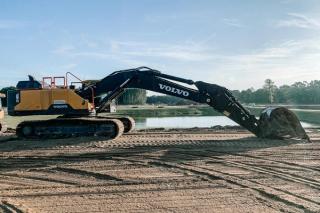
Powering the future of mining: Why haulage electrification matters
by Jasper Schrijvers , Matthew Hoare
View post

The Government of Ontario has released new rules about how excess soils should be handled. Are you prepared?
Come January 1, 2021 the new regulatory changes will start to take affect and will be phased in over a five-year period. The intent of the new Excess Soil Regulation is to:
So why does this matter you to you? Because new rules for managing soil will impact project timelines and costs.
If your site needs to get rid of soil, there are new requirements for project planning and tracking soil:
Additional project planning requirements are now needed for larger urban sites (i.e. >2000 m3) or sites more likely to be contaminated (e.g. industrial properties, gas stations etc.). A Qualified Professional in Environmental Site Assessment (QPESA) will need to be retained to help you through this process. New planning requirements include:
Project planning requirements should be completed early to minimize impacts to project timelines.
For many projects, a tracking system will also be required to document each load of soil that leaves the source site. The tracking system needs to include information such as soil quantity and quality, location of source excavation and final reuse destination, transportation information (date, time etc.), and the names of responsible parties (both source and reuse site).
Other things to Consider: Project Timing – Early planning is key
Additional planning and characterization requirements may put a strain on project timelines. To help to prevent project delays, identify possible receiving sites as early as possible and get a Qualified Person involved during the planning stages to determine standards and help with planning.
The project team should also consider if on-site reuse is an option and figure out if stockpiling on-site or a temporary receiving site outside the project area may be needed.
Keep in mind that depending on supply and demand of required soil, the receiving site may have to cover the cost of the planning investigations to keep things on schedule.
Engage your entire project team early in the process to start thinking about soil export and import needs, soil quality and potential reuse/source sites that may work for your project. Cooperation between all members of your project team will help to minimize project delays and costs as new requirements are rolled out.
Please feel free to contact us for advice, or if you have any queries or questions.

by Jasper Schrijvers , Matthew Hoare

by Clodagh Connolly, Nicola Inge, Andres Schottlaender

by Michelle Gluck, Jim McKinley